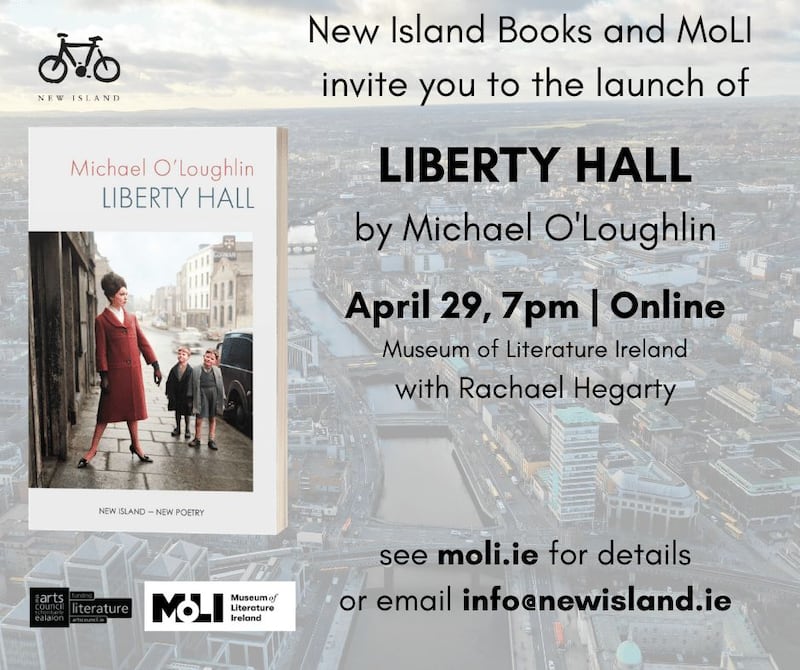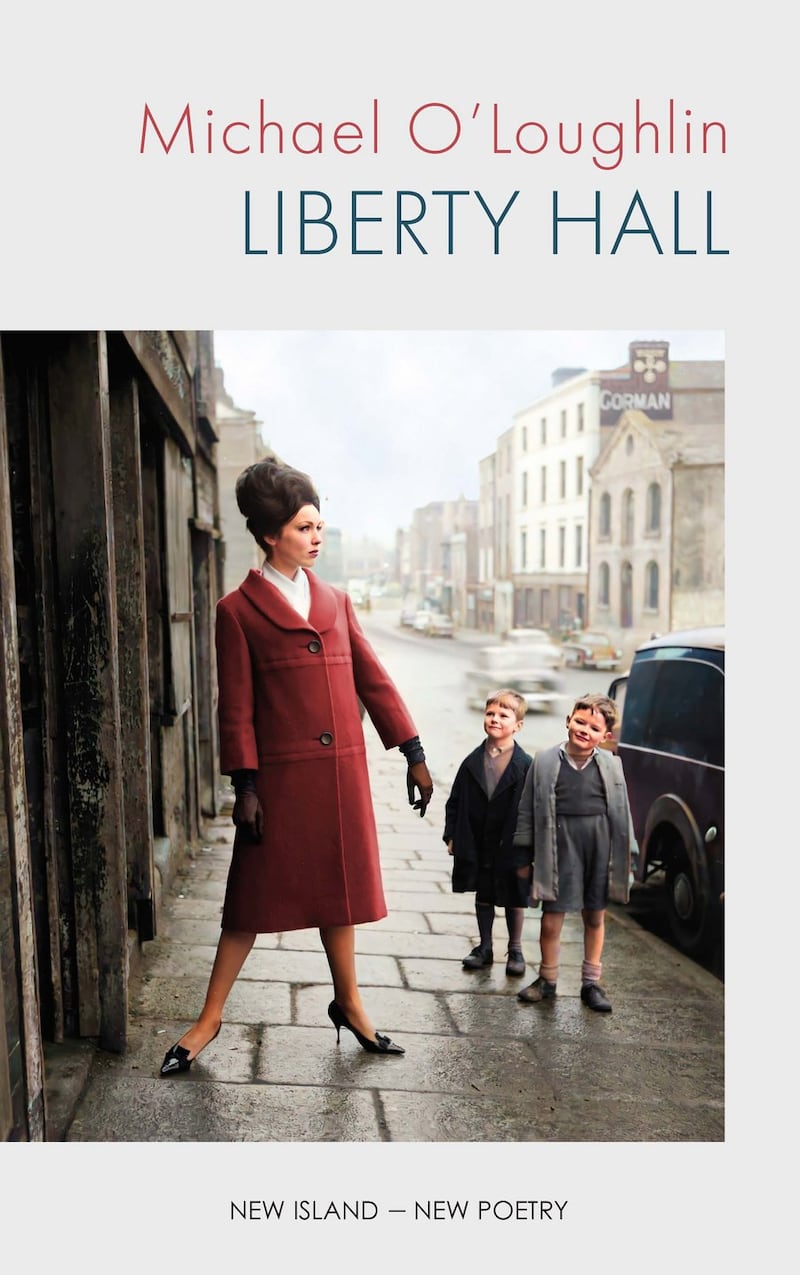It all started, as so many things do, around O’Connell St Bridge. One day in 2006 I was walking across the Liffey, as I seem to have been doing all my life, when I glanced to the left and saw Liberty Hall. That morning I had just heard the news that the iconic trade union headquarters was to be knocked down and replaced with a new building.
For many years the trade union headquarters was the tallest building in Dublin, and had been the scene of historical events. It was there that Maud Gonne and Countess Markievicz ran their soup kitchen during the 1913 Lockout, and it was there that the Proclamation of The Irish Republic was printed and the Irish Citizen Army lined up on April 24th, 1916, before marching around the corner to the GPO. Later, as every schoolboy knows, it was bombarded by the gunboat Helga, who a few years later would be reincarnated into the Free State navy as the Muirchú.

The current building, now the Siptu headquarters, was built in the 1960s. Apart from these public connotations, it has always had a private resonance for me, as both my parents, especially my late father, were ardent trade unionists. I have vivid childhood memories of attending events there in the ’60s, concerts and Christmas parties. Standing on the bridge, looking downriver, something suddenly seemed to gel and I felt that little jolt of excitement which precedes a poem.
I hurried home to start work on my Elegy for Liberty Hall. This may well seem premature, but it is not uncommon. It is a trade secret I feel hesitant to reveal, but poets will often unconsciously, and sometimes a little bit consciously, start gathering materials for elegies for family members, friends and colleagues, before they’re actually deceased, giving rise to the phenomenon which Michael Longley calls “the lightning elegists”.
As I write this in April 2021, from my desk in Portobello I can see the early morning sun striking the still intact roof of Liberty Hall across the river, though by now it has been overtaken as the highest building in Dublin by the poetically named Google Docks, among others.
As nothing happened, my elegy languished. But then, diving down a rabbit hole on the internet I came across a film called The Courier, filmed in Dublin in 1988, which I had never actually seen before. It’s remarkable for many reasons, not least the fact that it’s one of the first screen appearances of Aidan Gillen, and a notable early lead role for Gabriel Byrne as a gay Dublin ganglord, with a soundtrack by U2, Elvis Costello, and Aslan.
It was made by two of my Dublin friends from the late ’70s, Joe Lee and Frank Deasy. In 1982 they had set up City Vision, a film co-op focusing on social issues, a little like myself and Dermot Bolger’s Raven Arts Press with its emphasis on a gritty urban aesthetic. The Courier showed, for the first time on screen, that depressed, troubled and grey concrete Dublin we had grown up in.

Watching the film in a daze of vague memories and associations I realised that what I was seeing was akin to Dublin’s collective memory. And ever-present, looming in the background, or rising up on the horizon, was Liberty Hall. The poem acquired a new lease of life. I had been struggling to write about the distant lives of my parents and grandparents in the new Free State but The Courier made me realise that film and photography were a backdoor entrance into their emotional experience: the film-poem Liberty Hall was born.
There was something else, perhaps the most important thing. As a Dublin child I had often heard the expression “You’re in Liberty Hall!”, most often in the negative form of “You’re not in Liberty Hall now!” And I desperately, ardently longed to be in Liberty Hall. That is to say, all poets struggle to escape from the prisons they have built for themselves, the poems they have already written, which means that all poets live in a state of constant frustration.
In this we probably differ little from the rest of humanity. The French psychoanalyst Jacques Lacan sees this frustration as a primal experience, which he dates to the mirror phase in child development. From the age of six months on, a child can recognise its own image in the mirror, but has not yet achieved full muscular co-ordination, so the commands it gives to its limbs are not reproduced perfectly in the mirror. This leads to intense frustration. In your head, you are dancing like Nureyev, but when you look in the mirror, and a poem is nothing if not a mirror, you see only a lumbering, jerking monster created by Dr Frankenstein.
The only escape from that frustration, it seemed to me, was to find a new form, a new poetic freedom. Like many of my contemporaries, I have long looked enviously at our older colleagues in the US, writers such as John Ashbery, Frederik Seidl and Robert Haas, envying them their apparent casualness, lack of formal inhibition, their willingness to redefine what a poem is, or what could be said in a poem.
When I published an almost-collected poems in 2017 I felt those prison doors inch open. I could open the door, walk out into the street, and be in Liberty Hall. So, this book contains straightforward poems, prose memoirs, bits of found poetry, random notes from my rambling, cycling and dog walking around this and many other European cities, alongside translations, photographs, film stills, and whatever you’re having yourself.

When I met Gabriel Byrne in New York a couple of years ago, I asked him about The Courier, and told him about the book I was working on. His laconic reply, delivered in that familiar Dublinesque drawl, was: “I thought they were knocking it down.” I look across the city at the historic building, its green pagoda roof resplendent in the spring sunshine, mocking me slightly with its continued existence. Will they really knock it down someday? It doesn’t matter: I’m in my own Liberty Hall now...
Liberty Hall is published by New Island today










